Service Dog Training Tip – Walking on a Leash
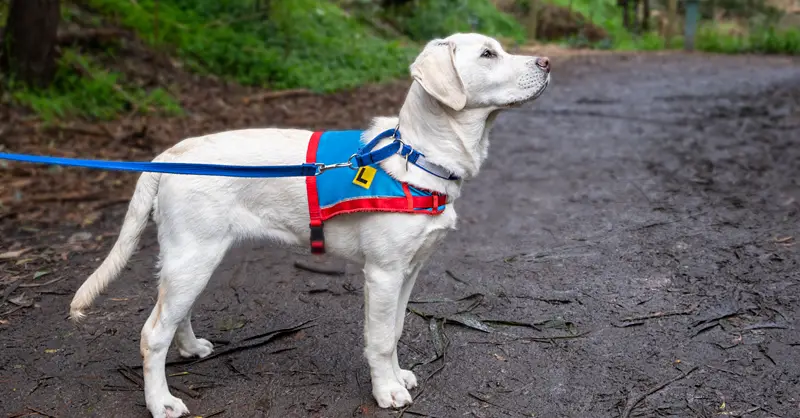
Have you ever asked yourself, ‘How do I get my dog to stop pulling on the leash‘? You are not alone. This is a common question. You may have noticed other dogs walking calmly beside their handler while your dog tugs impatiently on the leash.
In this article, we’ll show you how to teach your service dog in training to keep pace with you during walks.
Getting Started
Step 1 – Leash and Treats
You can begin leash training in your yard with a 10-20 foot leash and treats your dog likes (small pieces of meat or fruit usually work if you don’t have dog treats or any food your dog likes). It’s best to use a front harness instead of a neck collar.
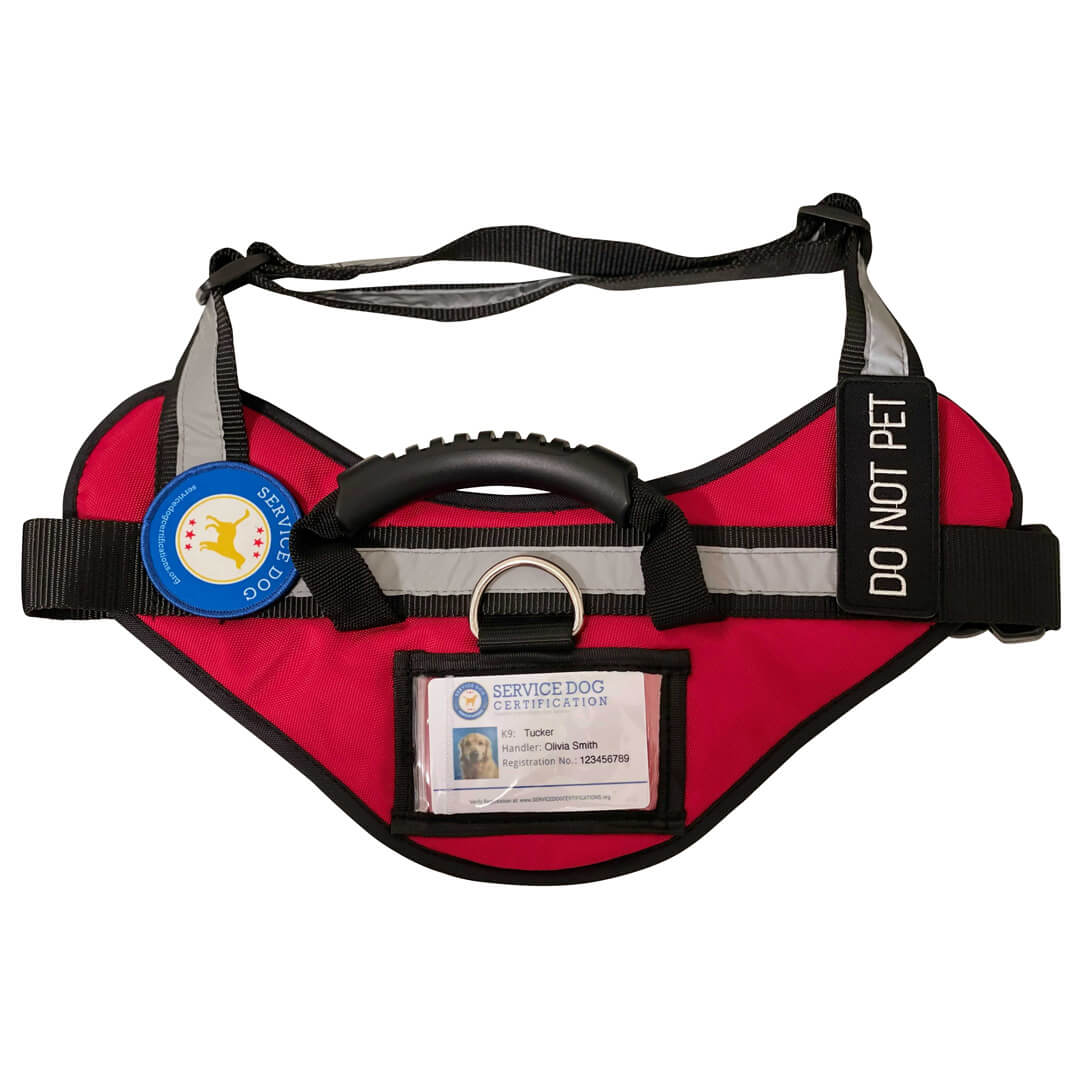
Some big dogs may do better with a head collar. These may also discourage pulling because when the dog strains at the lead, the head collar puts gentle downward pressure on the dog’s head.
Step 2 – Establish a Habit
First, decide which side you want your dog to walk on, then always practice with the dog on that side. This will be the side you offer treats on, encouraging the dog to stay there. Walk around your yard, rewarding your dog with a treat when they stay by your side. At first, give them a treat every few steps for staying with you. You can do this less often as the dog improves, but they should always get their reward while doing the behavior you want to reinforce — in this case, staying by your side.
Sometimes the dog will lag or wander. When this happens, say, “Let’s go” or “Come on” while slapping your thigh on the treat side. This should get your dog’s attention. As soon as your service dog catches up with you, give them a treat. Give more treats every few steps as the dog continues to stay with you.
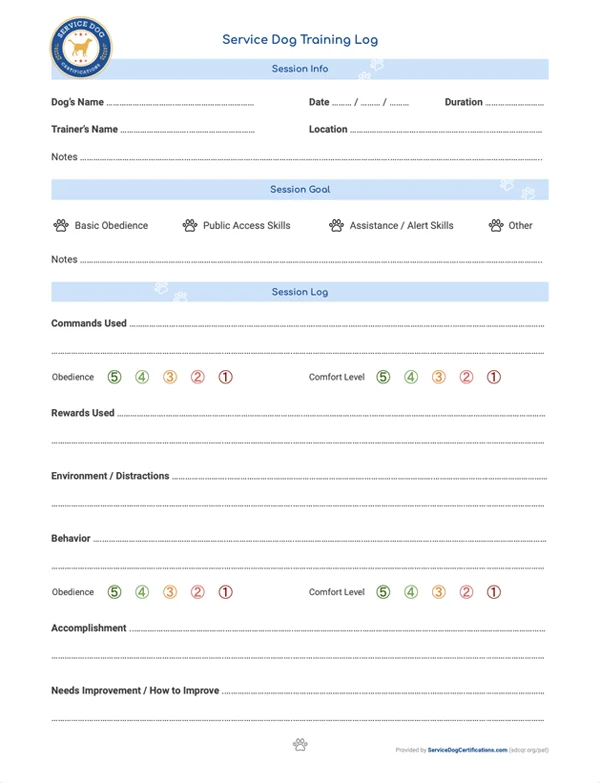 | Keeping a training log will help with analyzing the progress of your service dog’s leash training. Download this free sample Service Dog Training Log, provided by Service Dog Certifications, to get started. |
Step 3 – Dealing with Stubbornness
What if your service dog in training is stubborn? If the dog doesn’t respond to “Let’s go” or the slap on your thigh, pull the leash taut and give it a gentle tug. The idea is to remind the dog of your presence and make it more difficult for them to ignore you. However, don’t force or pull the dog to you! Let them catch up on their own. Offer praise when they finally come toward you, then take pressure off the leash.
Step 4 – Set Boundaries
Dogs need time and space to relieve themselves when walking, but you want to be able to decide when and where they do it (not on the neighbor’s rose bush!). Choose a time when you would typically give a food reward, and instead say, “Sniff” or “Potty.” This freedom to explore is a reward, too – so if the dog tugs on the lead, say, “Let’s go,” and end the free time. Do this also when your service dog is finished with relieving, and you’re ready to end the free time. Then continue walking.
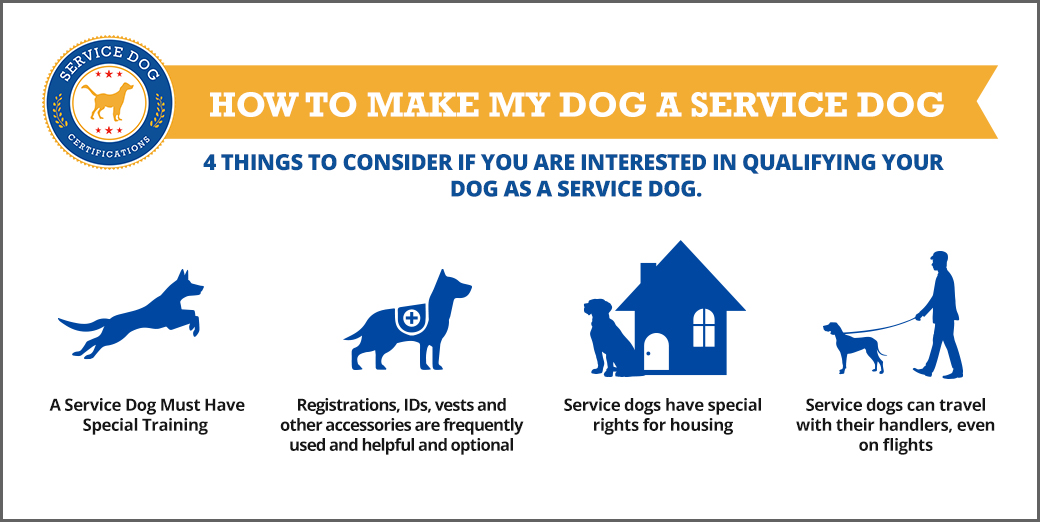
Getting Out of the Yard
Once your service dog in training has mastered the previous exercises, start shrinking the size of the rope or leash until you’re at about six feet of lead. Mix things up by walking faster, slower, or in a different direction. If your service dog stays by your side, you can move on to a sidewalk. If not, continue training until your service dog has it down.
Once on a public sidewalk, there will be more distractions, so have extra treats on hand. Continue training the way you did in your yard, saying, “Let’s go,” and tugging on the lead if your dog gets distracted and starts pulling. When they return to your side, reward them with a big treat for ignoring an extra-interesting distraction, like a cat, a squirrel, or a car to chase.
What if my dog keeps trying to trip me?
If your dog keeps getting underfoot, stomp or shuffle your feet, bringing them to the dog’s attention.
Remember, if you’re happy and upbeat during training, chances are your service dog in training will be too.
ServiceDogCertifications.com
Pay Attention to Your Service Dog’s Ability
Some dogs may figure out that simply pulling away and then coming back to you is an easy way to get a treat. Sneaky dog! If you feel your dog is playing you for treats, stop giving a treat when the dog returns, and instead, give one for staying by your side for a longer period of time without interruption.
As with any training, leash training a new service dog takes time and patience. If you’re unable to get your dog to follow or you don’t have the proper space and time to conduct the service dog training yourself, don’t be afraid to reach out to a friend with service dog training experience or even a professional. As your fully-trained service dog will be able to follow you into any public area – even places where usually no dogs are allowed –, leash training is an important factor in getting your service dog to pass the required public access test.
Show that your Service Dog has mastered the Public Access Test.
Get your Handler-Certified Public Access Test certificate.
About the Author: The writing team at Service Dog Certifications is made up of folks who really know their stuff when it comes to disability laws and assistance animals. Many of our writers and editors have service dogs themselves and share insights from their own experiences. All of us have a passion for disability rights and animals.
Latest Posts
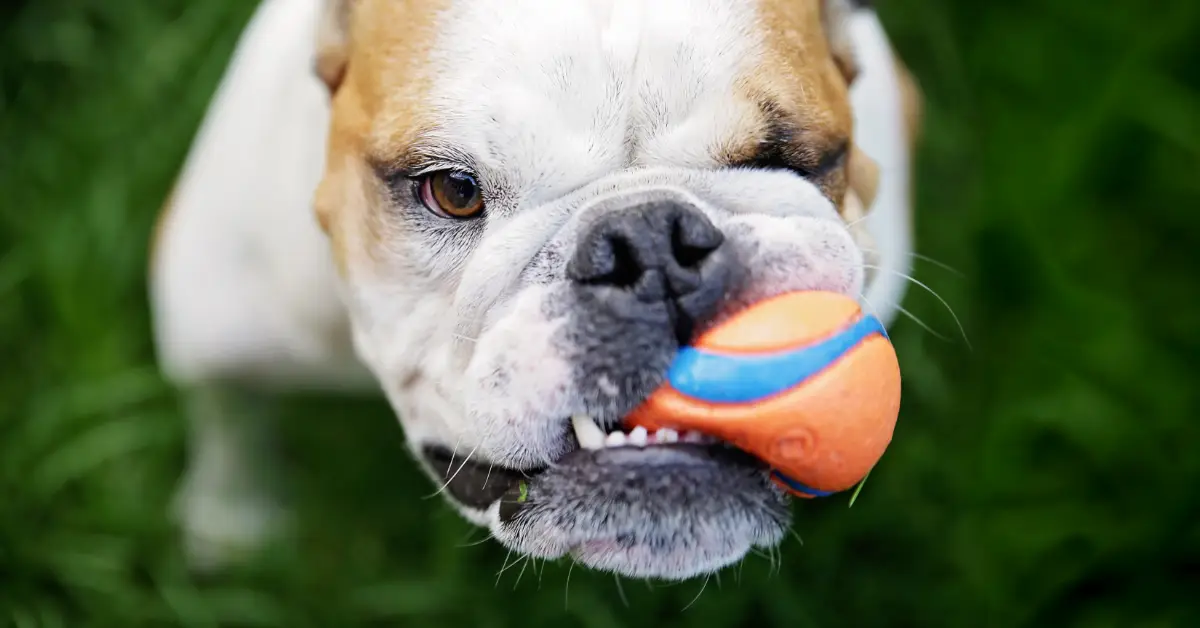
Dangerous Materials Hiding in Your Dog Products
Jake’s German Shepherd began developing strange rashes around his collar. Three vet visits later, they figured out the leather was treated with chromium — a chemical that irritates sensitive skin. Jake had no idea his dog’s collar contained industrial chemicals. Most dog owners don’t know what goes into the products they buy. Many companies use […]

Read More

Can You Bring a Service Dog to a Basketball Game?
Yes, you absolutely can bring your service dog to basketball games. Whether you’re heading to your local high school tournament, a packed college rivalry game, or splurging on NBA tickets, the Americans with Disabilities Act protects your right to be accompanied by your service dog anywhere the public can go. When you arrive, venue employees […]

Read More
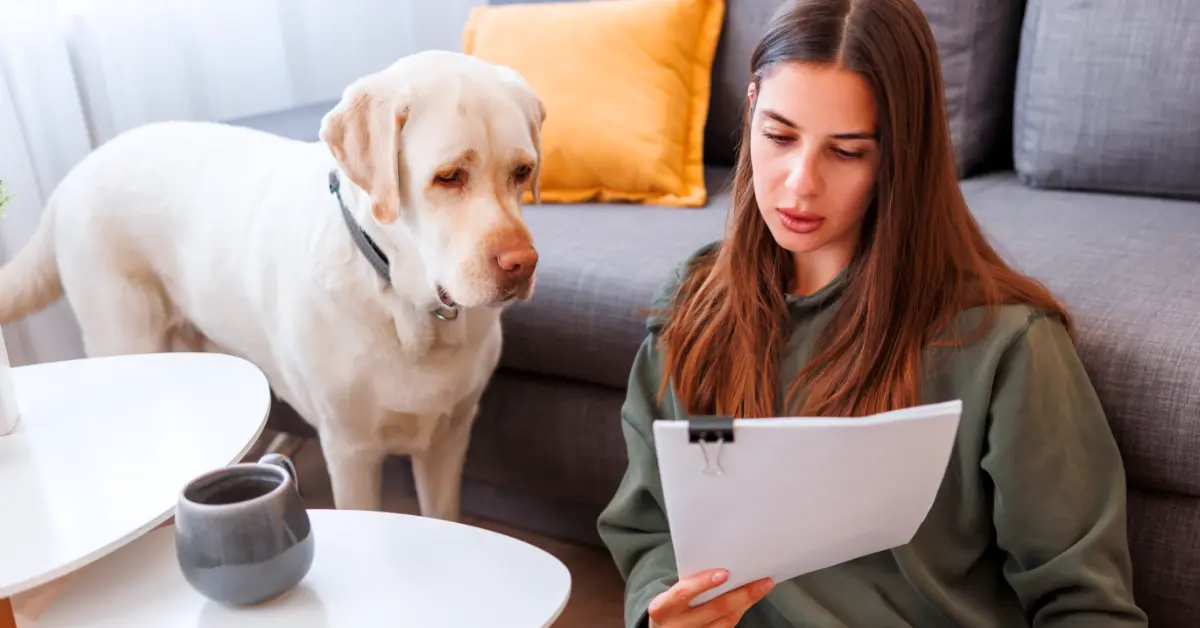
Best Pet Health Insurance Providers
If you own a pet, you know how important — and expensive — vet care can be. One way to offset those costs is to purchase pet health insurance. Like typical health insurance, pet insurance is available at many price points, and can cover all, most, or only some of your vet-related costs. It can […]

Read More

